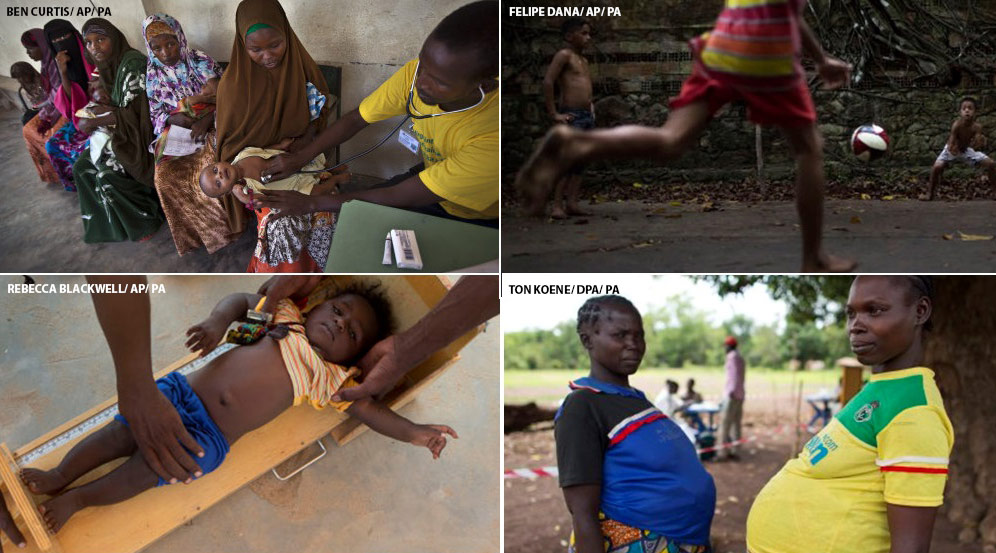Originally published on The BMJ. Available at: http://www.bmj.com/content/women%E2%80%99s-children%E2%80%99s-and-adolescents%E2%80%99-health-0

The year 2015 marks a defining moment for the health of women, children, and adolescents. It is the end point of the United Nations’ millennium development goals, and their transition to the sustainable development goals. It is also the 20th anniversary of the International Conference on Population and Development’s plan of action and the Beijing Declaration and platform of action.
Although great strides have been made in reducing maternal and child mortality, showing that change is possible, many countries are lagging behind in reaching millennium development goal 4 (to reduce the under 5 mortality rate by two thirds between 1990 and 2015) and goal 5 (to reduce the maternal mortality ratio by three quarters between 1990 and 2015 and achieve universal access to reproductive healthcare by 2015), and there are vast inequities between and within countries. In 2010, confronted with unacceptably high rates of maternal and child mortality, the UN secretary general called on the world to develop a strategy to improve maternal and child health in the world’s poorest and high burden countries, starting with 49 low income countries. The articles in this collection examine the evidence and the thinking that form the basis of the new global strategy.
Click to view this article collection in pdf format
Towards a new global strategy for women’s, children’s and adolescents’ health
We know what needs to be done, say Marleen Temmerman and colleagues, but we need to push hard now to create a world in which every women, every child, and every adolescent is able to survive, thrive, and transform.
Women’s health priorities and interventions
Building on the unfinished agenda, Marleen Temmerman and colleagues elaborate on the actions needed to improve the health and wellbeing of women and girls around the world.
Children’s health priorities and interventions
Wilson Were and colleagues explain why the global community should continue to invest in children’s health, to complete the unfinished child survival agenda and tackle the emerging child health priorities.
Realising the health and wellbeing of adolescents
Investing in adolescents’ health and development is key to improving their survival and wellbeing and critical for the success of the post-2015 development agenda, argue Laura Laski and colleagues
Ending preventable maternal and newborn mortality and stillbirths
Doris Chou and colleagues discuss the strategic priorities needed to prevent maternal and newborn deaths and stillbirths and promote maternal and newborn health and wellbeing.
Effective interventions and strategies for improving early child development
Investing in early child development is a smart and essential strategy for building human capital, reducing inequities, and promoting sustainable development, argue Bernadette Daelmans and colleagues
Nutrition and health in women, children, and adolescent girls
Urgent action is needed to tackle malnutrition in all forms and to help nutrition unlock the potential of investment in the health of women, children, and adolescents, say Francesco Branca and colleagues.
Improving the resilience and workforce of health systems for women’s, children’s, and adolescents’ health
To achieve the sustainable development goals related to maternal, child, and adolescent health, countries need to integrate targeted interventions within their national health strategies and leverage them into financing, workforce, and monitoring capacity across the system, say James Campbell and colleagues.
Ensuring multisectoral action on the determinants of reproductive, maternal, newborn, child, and adolescent health in the post-2015 era
Kumanan Rasanathan and colleagues explain how integrating action on determinants of women’s, children’s, and adolescents’ health beyond the health sector into core health strategies is crucial to achieving sustainable development goal targets to end preventable deaths and ensure healthy lives.
Human rights in the new global strategy
By recognising the centrality of human rights, the revised Global Strategy encourages some bold shifts in improving the health and wellbeing of women, children, and adolescents, say Jyoti Sanghera and colleagues.
National leadership: driving forward the updated Global Strategy for Women’s, Children’s and Adolescents’ Health
Implementing the updated global strategy means effective leadership, requiring country led health plans, partnerships, accountability, advocacy, and collective action at all levels, say C K Mishra and colleagues.
Innovating for women’s, children’s, and adolescents’ health
Innovation is central to reaching the sustainable development goals on women’s, children’s, and adolescents’ health. The task now is to scale up these innovations in a sustainable way, say Haitham El-Noush and colleagues.
Financing women’s, children’s, and adolescents’ health
While global investment in women’s, children’s, and adolescents’ health has increased in recent years, significant gaps remain. Geir Lie and colleagues propose five strategic shifts in financing.
Women’s, children’s, and adolescents’ health in humanitarian and other crises
The worst rates of preventable mortality and morbidity among women, adolescents, and children occur in humanitarian and other crises. Sarah Zeid and colleagues discuss the specific attention that is needed for women, adolescents, and children in crises and fragile settings.
Accountability in the 2015 Global Strategy for Women’s, Children’s and Adolescents’ Health
Julian Schweitzer describes the steps taken to ensure accountability in the 2015 Global Strategy and why it is important to success.
Prioritising women’s, children’s, and adolescents’ health in the post-2015 world
Lori McDougall and colleagues set out a three point agenda for strengthening advocacy: investing in multipartner national platforms for action; innovative communication circuits to unite advocacy; and multidonor funding mechanisms to scale up advocacy efforts.
